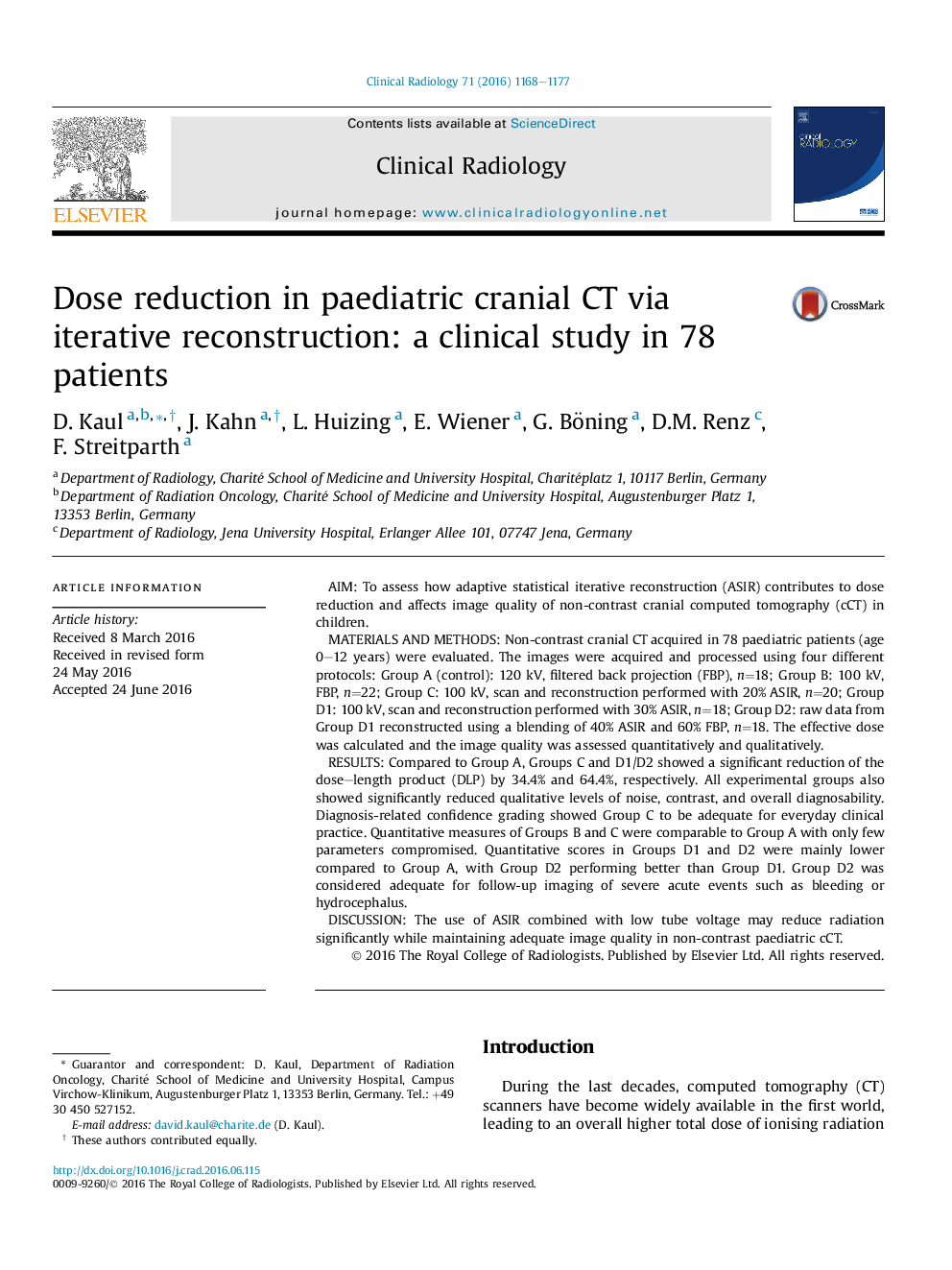| Article ID | Journal | Published Year | Pages | File Type |
|---|---|---|---|---|
| 3981119 | Clinical Radiology | 2016 | 10 Pages |
•ASIR and low kV reduce radiation while maintaining adequate image quality in paediatric cCT.•The use of 100 kV and 20% ASIR is adequate for everyday clinical practice.•The use of 100 kV and 30% ASIR (blending 40%/60%) is adequate for follow-up imaging.
AimTo assess how adaptive statistical iterative reconstruction (ASIR) contributes to dose reduction and affects image quality of non-contrast cranial computed tomography (cCT) in children.Materials and methodsNon-contrast cranial CT acquired in 78 paediatric patients (age 0–12 years) were evaluated. The images were acquired and processed using four different protocols: Group A (control): 120 kV, filtered back projection (FBP), n=18; Group B: 100 kV, FBP, n=22; Group C: 100 kV, scan and reconstruction performed with 20% ASIR, n=20; Group D1: 100 kV, scan and reconstruction performed with 30% ASIR, n=18; Group D2: raw data from Group D1 reconstructed using a blending of 40% ASIR and 60% FBP, n=18. The effective dose was calculated and the image quality was assessed quantitatively and qualitatively.ResultsCompared to Group A, Groups C and D1/D2 showed a significant reduction of the dose–length product (DLP) by 34.4% and 64.4%, respectively. All experimental groups also showed significantly reduced qualitative levels of noise, contrast, and overall diagnosability. Diagnosis-related confidence grading showed Group C to be adequate for everyday clinical practice. Quantitative measures of Groups B and C were comparable to Group A with only few parameters compromised. Quantitative scores in Groups D1 and D2 were mainly lower compared to Group A, with Group D2 performing better than Group D1. Group D2 was considered adequate for follow-up imaging of severe acute events such as bleeding or hydrocephalus.DiscussionThe use of ASIR combined with low tube voltage may reduce radiation significantly while maintaining adequate image quality in non-contrast paediatric cCT.
